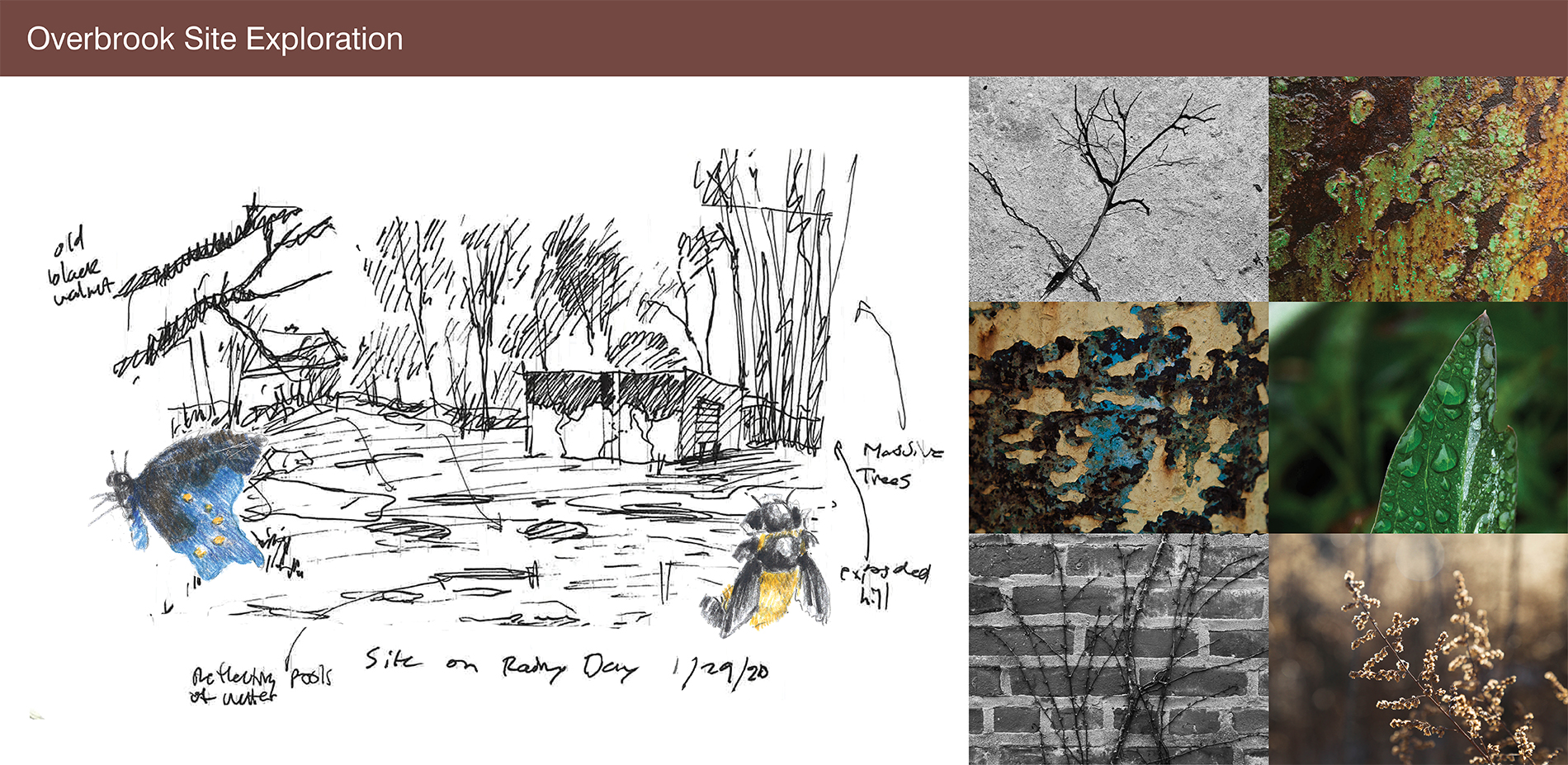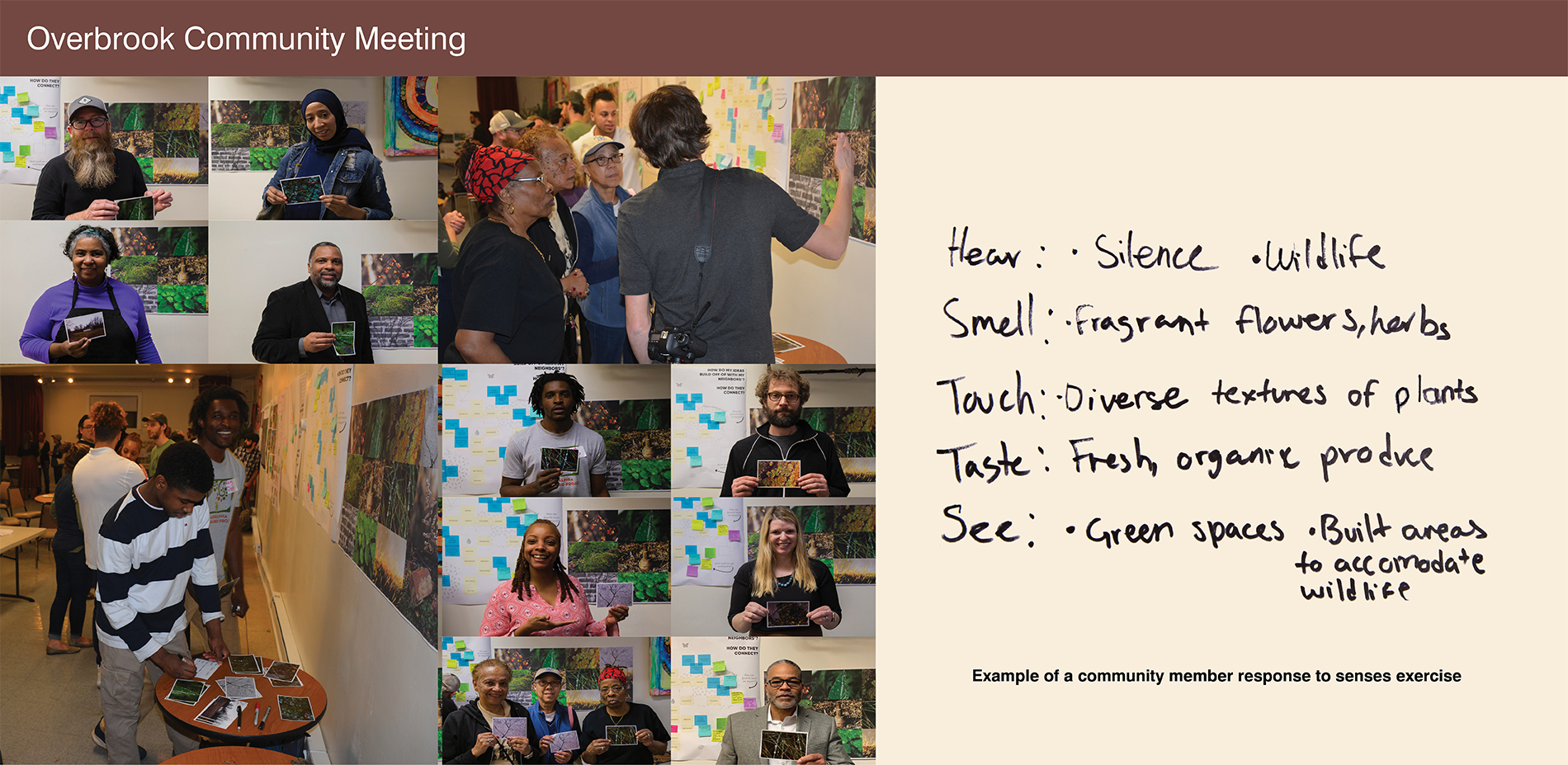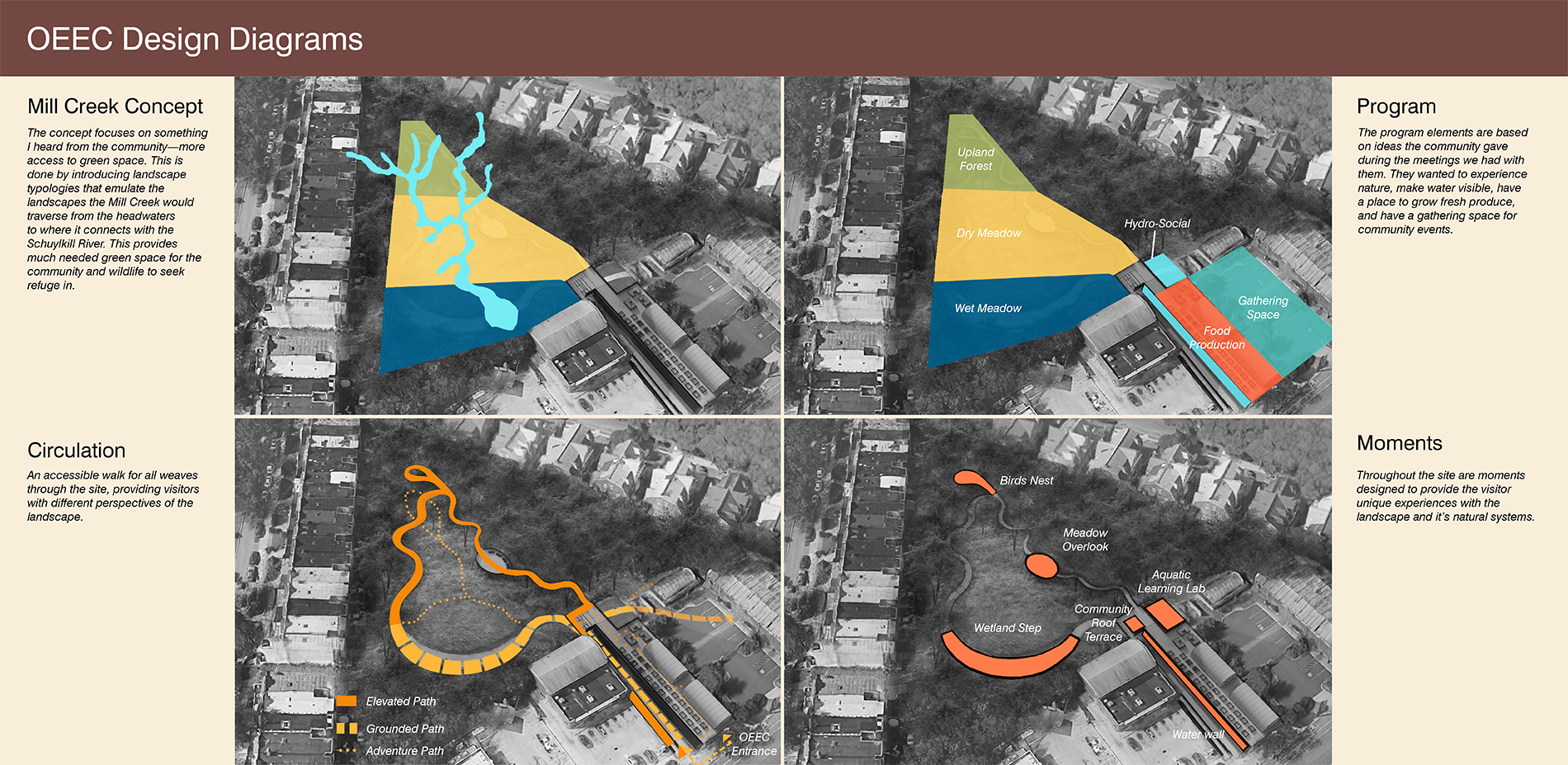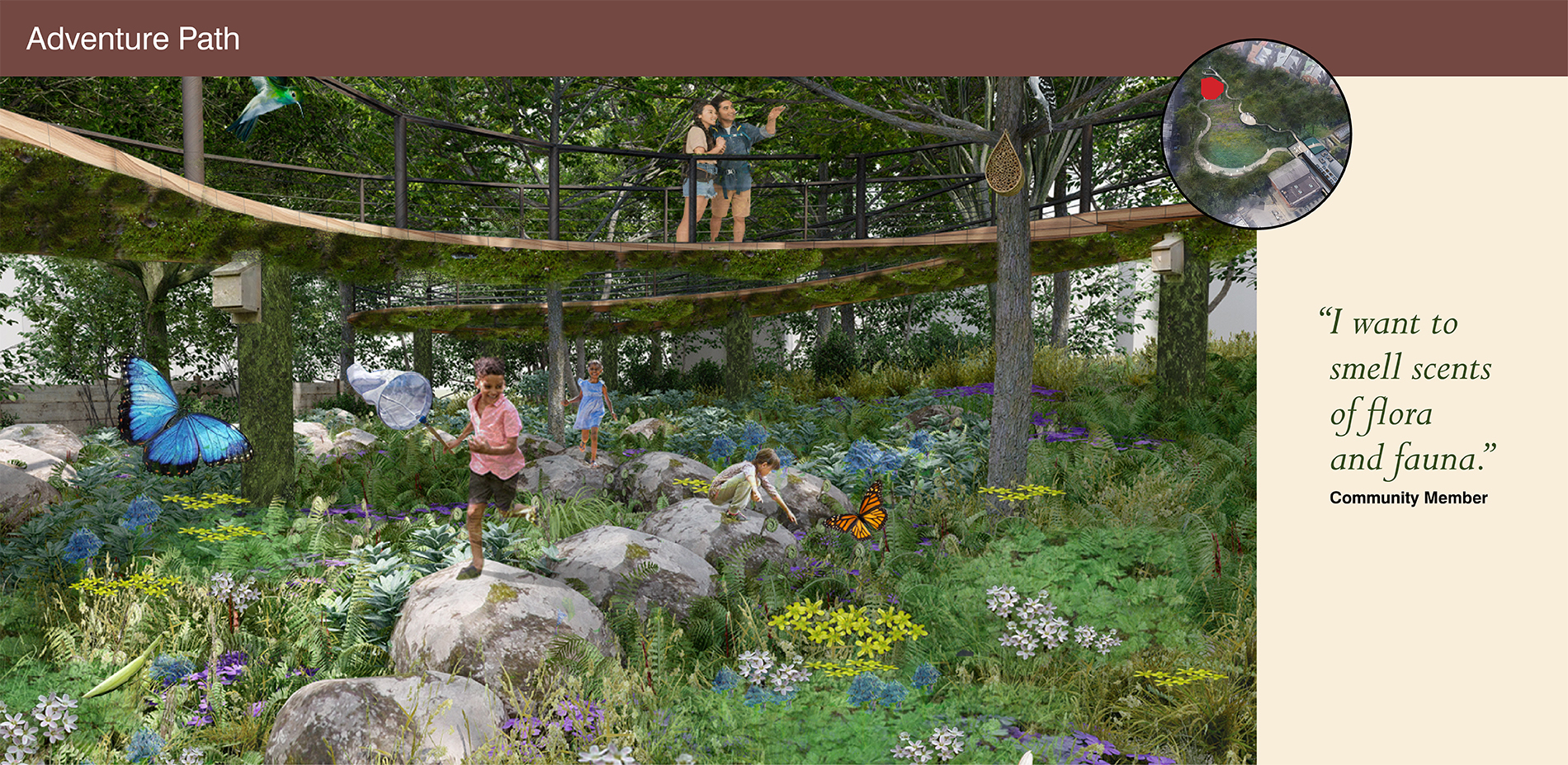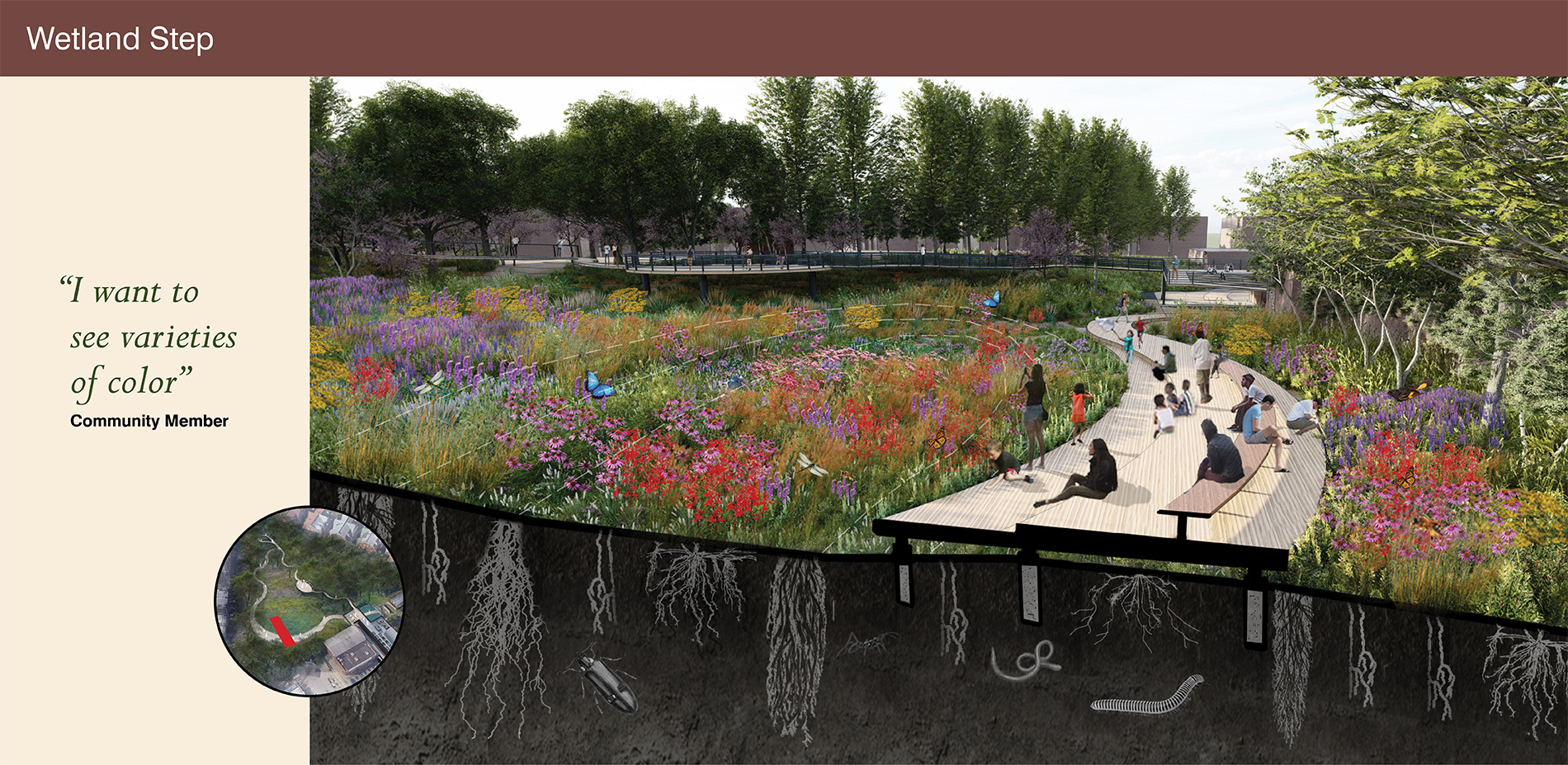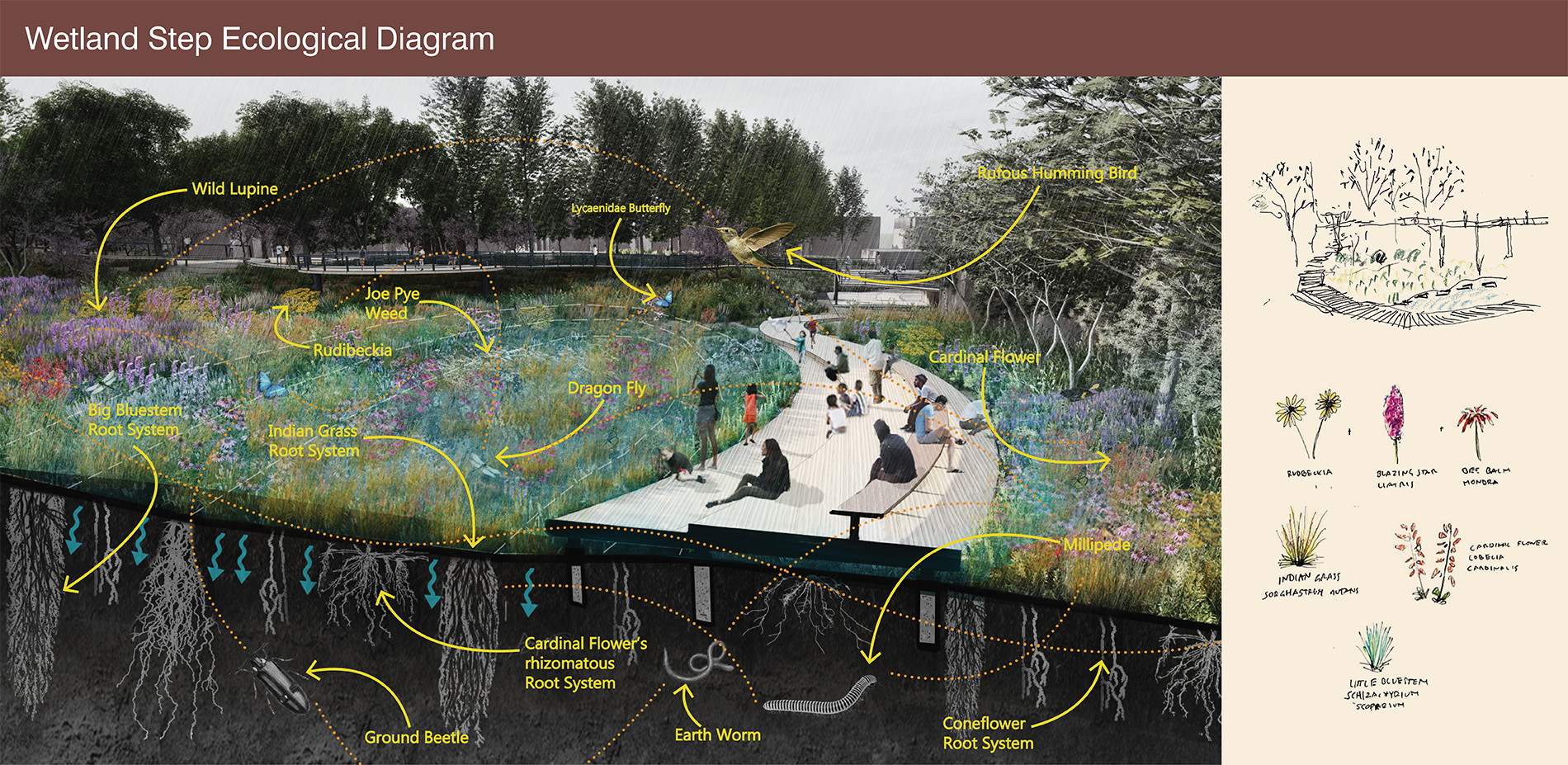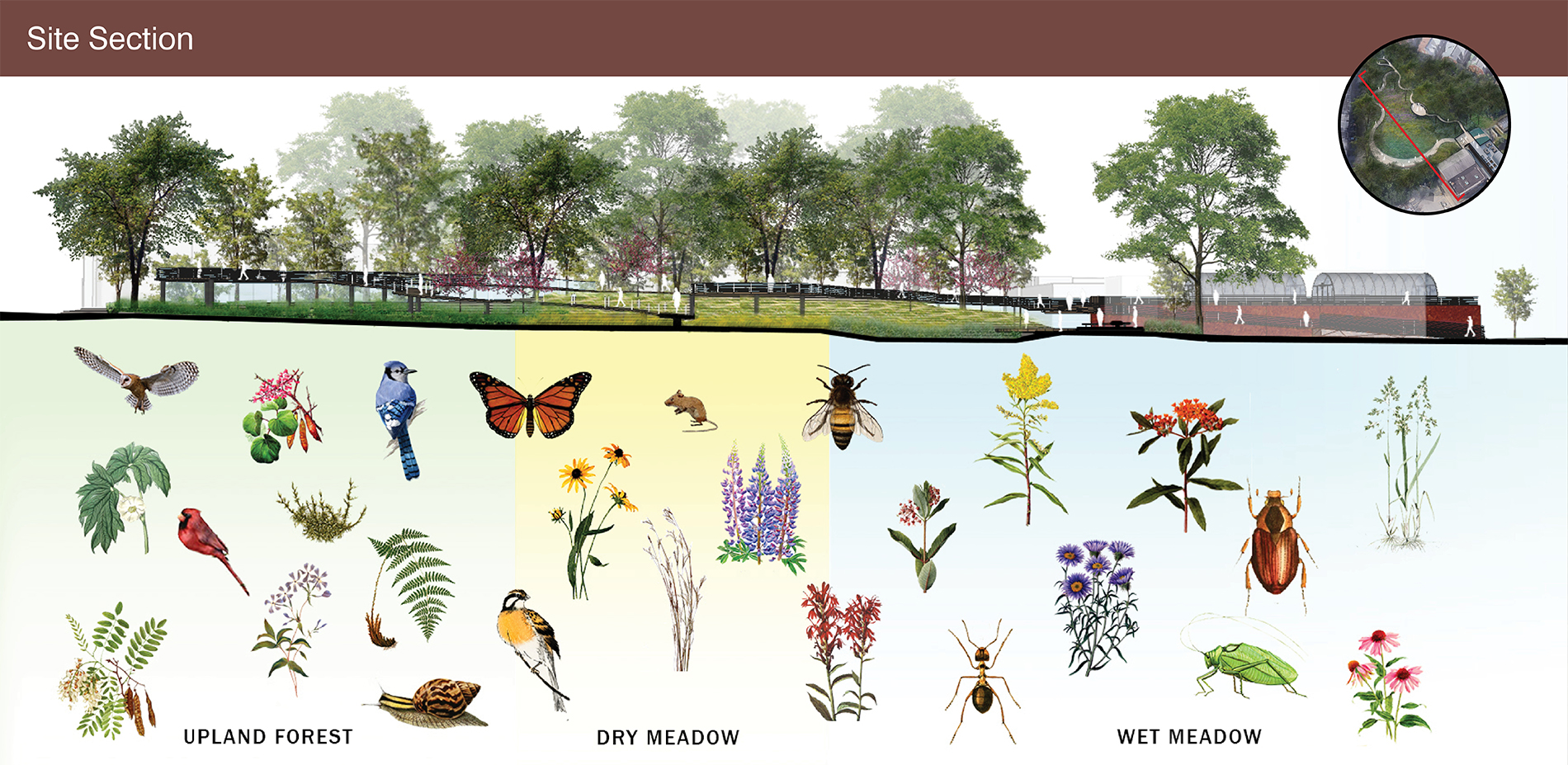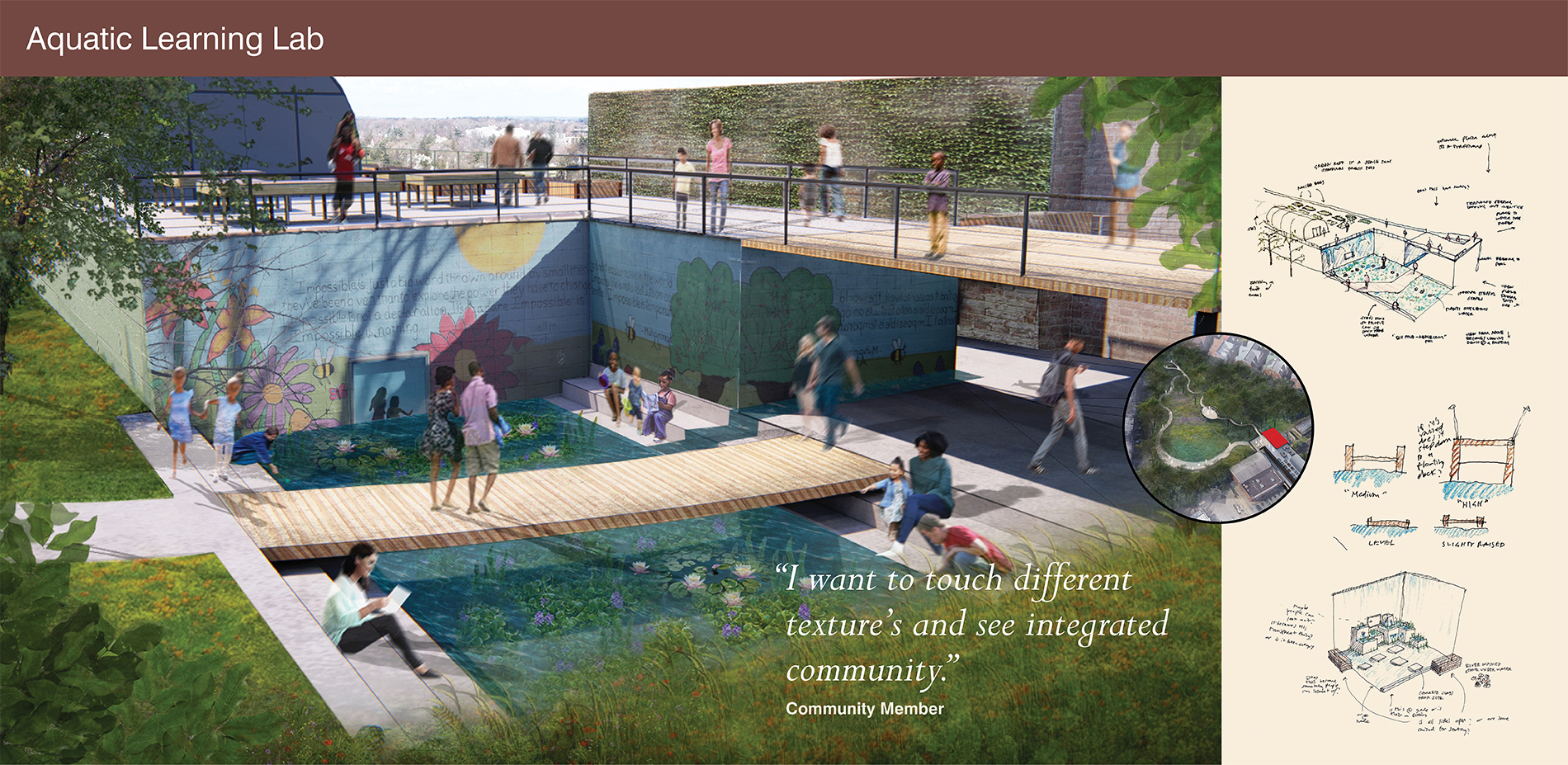Finding Beauty in the Commonplace
Honor Award
General Design
Benjamin Nardi, Student ASLA
Faculty Advisors: Kimberlee Douglas, ASLA; Richard Newton, ASLA; Matthew Tucker
Thomas Jefferson University
West Philadelphia’s Overbrook neighborhood lacks access to green space, but a proposal aligned with the Overbrook Environmental Educational Center would transform a vacant brownfield site into a multi-sensory nature park spread across three habitat types. Using a former creek as a point of departure, the design weaves together upland forest with dry and wet meadows to create a slice of biodiversity in Overbrook’s collective back yard. The community expressed desires for ample sunlight, sounds of water, and a broad spectrum of audible and visible flora and fauna, which led to development of a tree canopy pathway elevating visitors above the forest floor, both physically and spiritually.
- 2020 Awards Jury
Project Statement
Though often overlooked and inaccessible, vacant urban sites are teeming with wildlife and a special delicate beauty. These autonomous landscapes that have been cut off and forgotten, provide places to think, walk, and refuel just by being -- a site that a hundred years ago was a quarry providing commerce and jobs has left in its wake a landscape that just by existing fosters contemplation, community, and imagination. Finding Beauty in the Commonplace uses this forgotten landscape to build upon the existing history, community, and characteristics of an urban brownfield site in Overbrook, Philadelphia. The design reconnects the community to the native flora and fauna allowing both wildlife and community members to seek refuge in a sea of dense urban development.
This project is worthy of consideration because of its potential to be a model for the re-use of vacant land as a way to connect people back with nature in urban areas.
Project Narrative
CONTEXT
The community of Overbrook is located in West Philadelphia and is a dense neighborhood with lots of row homes but very little access to high-quality green space. Our client, The Overbrook Environmental Educational Center (OEEC) main mission is to provide an education center that gets the community outside to experience nature, improve quality of life, remediate potential environmental hazards and celebrate place. Where the OEEC is located on Lancaster Avenue creates an interesting socio-economic situation in that, five blocks to the south is one of the poorest areas in Philadelphia, while five blocks to the north is one of the wealthiest. Lancaster Avenue has made Overbrook a drive-thru neighborhood, people use Lancaster Avenue to commute to and from work bypassing the communities alongside it. We were approached by the OEEC to help create a vibrant ecological space for visitors to experience urban ecology and improve the life of residents. The studio was focused on working with a newly acquired 1.1-acre brownfield site behind the OEEC building. The OEEC director wanted the design to create a sense of wonderment and reveal ecological processes from a different perspective.
SITE INVENTORY/ RESEARCH
One of the goals of my project was to fully understand the site and its history. Visiting the site during different times of the day to see the light conditions, during storm events to see where water ran and collected, and sometimes sitting very patiently to observe the fauna. Photographs and drawings recorded what I had experienced on site. Through the extensive visits and attention to details, I discovered the site was teeming with beauty. Whether it was the textures of old materials or the abundant life in a pool of water, there was so much to be revealed. The ultimate design revealed the beauty of these details.
I also explored thoroughly, the history of Overbrook through a social and ecological justice lens. I discovered Mill Creek which was a creek that ran right past our site on its way to the Schuylkill River. Like many of the creeks in Philadelphia, it was put underground into a concrete pipe, taking away all the habitat that was once there. This inspired me to look at ways to re-introduce the Mill Creek to the OEEC site.
COMMUNITY MEETINGS
The community is the expert of their neighborhood and as such, we respect the wisdom of their voices. Our studio operated on the premise that the community was critical in the design process and so, with the help of the OEEC leadership, we held community meetings for input from the residents of Overbrook. The first meeting was structured around introductions and listening to initial design ideas from the community. Our job was not to tell them what we thought what was best, but instead to listen to everyone’s thoughts, concerns, and dreams. The second meeting, we presented some of our findings and research. The goal was for verification of the information as well as to prompt more discussion about their vision for the neighborhood and for the site design. Based on feedback, I was very focused on connecting residents to the site through sensual experiences and compiled a series of photographs from the site to see what discussion it might prompt. Overwhelmingly, people were able to articulate their desire for a connection to nature and all of its benefits. They spoke about hearing wildlife, smelling flowers and trees in bloom, touching diverse plants and textures, tasting fresh vegetables, and having greenspaces for humans and wildlife to co-exist. The community input gave direction to the design¬¬ -it was no longer just my design--it was our design.
APPROACH
The design approach Finding Beauty in the Commonplace focuses on something I heard from the community -- more access to green space. My main goal then was to re-connect the residents of Overbrook with nature. The site has three landscape typologies; upland forest, dry meadow, and a wet meadow, emulating the landscapes that Mill Creek would traverse from the headwaters to where it connects with the Schuylkill River. This provides visitors the opportunity to experience three micro-climates, reconnecting them with Mill Creek. My design focuses on making landscape the program by providing access above, below, and on the ground revealing the beauty of ecological processes. The space becomes a refuge for people and wildlife searching for the benefits of green space. Too often communities like Overbrook are overlooked and their voices are not heard, this design is not that. The environmental center is a place that the residents of Overbrook deserve -- somewhere to provide joy and inspiration in their OWN community by bringing people together and building upon the existing values already in place.
CONCLUSION
My main goal in this project is to show, through the design, the value of listening to the voices of communities and so that each visitor comes away from the site with a new idea or story and that those individual stories tell the story of the OEEC.

